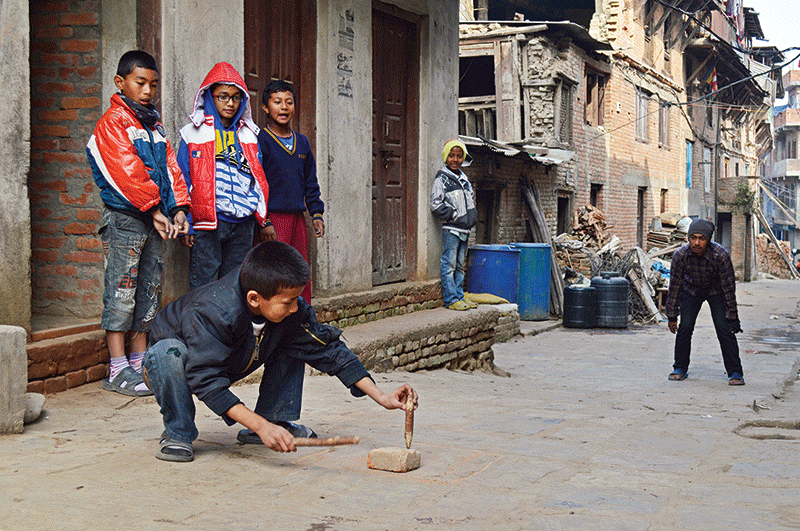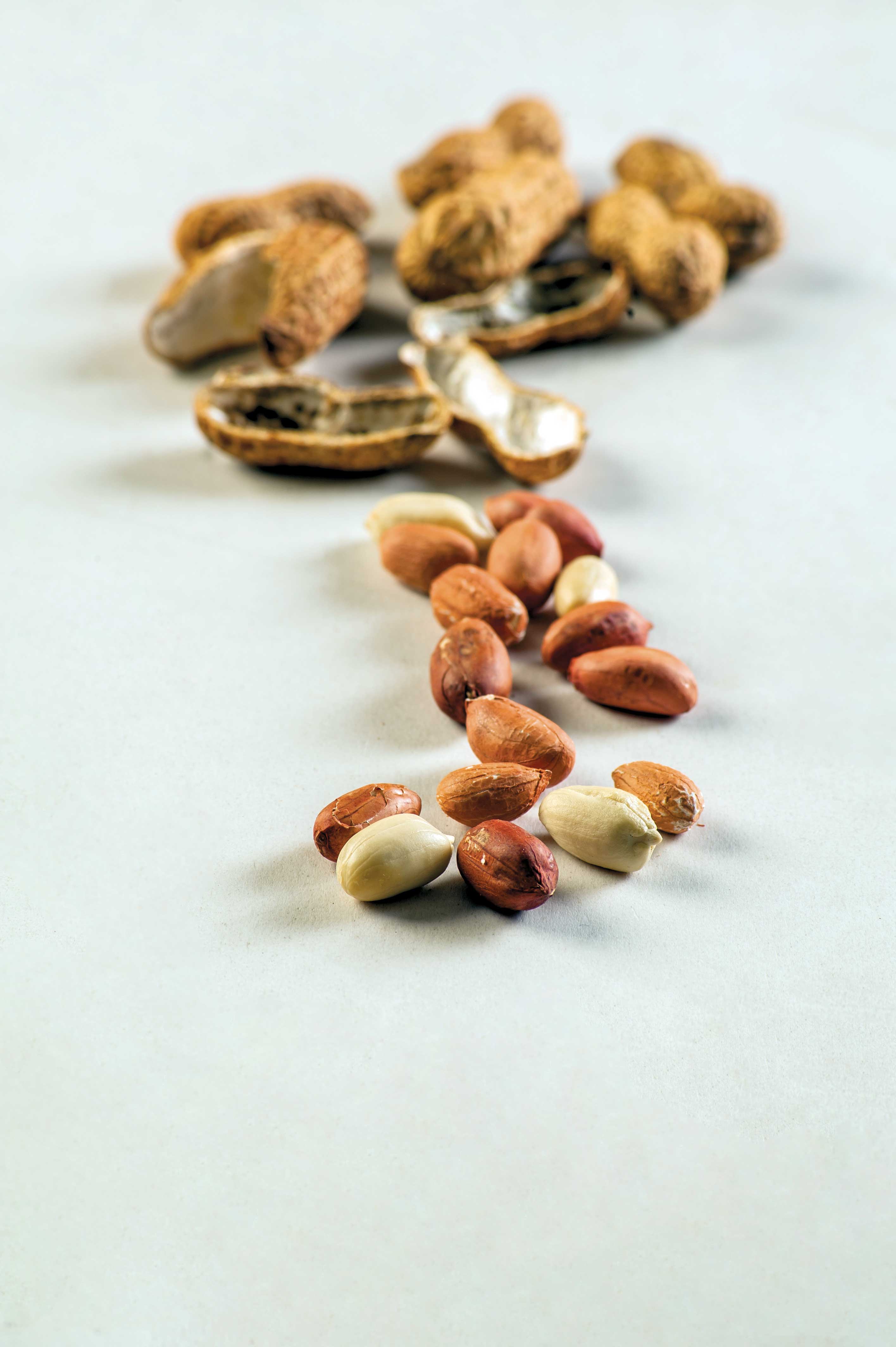
The weather’s getting colder, and people’s minds are turning to hearty, warming winter fare. There’s another kind of winter food though, special because it is made only in the cold season. It’s also exceptional in that it takes a full day’s work to make, and then a whole night to set. I am speaking of course of the Newari specialties takha: and sanyakhunya.
The process is not quick, or simple. Bekha Man Byanjankar, known to everyone as Kwacha, and his son Surendra have been making it since 2044 BS. It’s a challenge to find the shop in the maze of small alleys behind Patan Durbar Square, but if you get lost, just ask a local—Chyasal is a place where everyone knows everyone.
Making takha: begins with buff parts; the head, tail, skin and upper parts of the leg are chopped into small pieces and cooked in a giant 22 litre pressure cooker for up to three hours. Each bit of meat is painstakingly removed from the bones and transferred to a large copper cauldron.
This is where the two preparations vary. Some of the juice from the pressure cooked meat is removed to make the takha:. Black salt, lots of chilli powder, hing, lemon juice, small dried fish and garam masala are cooked together to become the spicy, sour sanyakhunya.
The removed meat bits in the copper pot are mixed with garlic, onions, salt and garam masala amongst others and the mixture is cooked for another four to five hours. When it feels sticky, it’s ready for the last step. Mustard oil, jimbu and dried onion tops are heated till they crackle in another pot, and the takha: is added.
This process has now taken the better part of the day. The takha: and sanyakhunya are now poured out into steel bowls and placed in an upstairs room with the windows open. Kathmandu’s cold air will set it during the night. The father and son chefs tell me that it’s never refrigerated. Sitting out overnight is part of the process, and is why it can only be made in the winter. The room filled with bowls made the night before is rich with a tart, spicy, pungent smell; colors of yellow and red.
I’ve eaten takkha before, but the one made here is hands down the best I’ve had. Strong without being totally overpowering, with the complex mix of spices providing a lingering aftertaste. The sanyakhunya is a new experience for me, sour and very spicy, with the fish taste mild. They are both delicious, an experience not to be missed.
Watching this family carry on an old tradition is impressive; nose to tail cooking in the truest sense of the word, with nothing wasted at all. Of course the eatery is filled with other Newari goodies, but word has obviously gotten around that takkha and sanyakhunya are being made now, as nearly everyone who comes in asks after it. Some sit to eat it with beaten rice, many more take small bags away for their lunch. Whole bowls are bought for picnics, or ordered for weddings, parties, a Newari Bhoj. Everyone is eating their fill, stocking up on a favourite while they can, before it’s gone again for another year.










